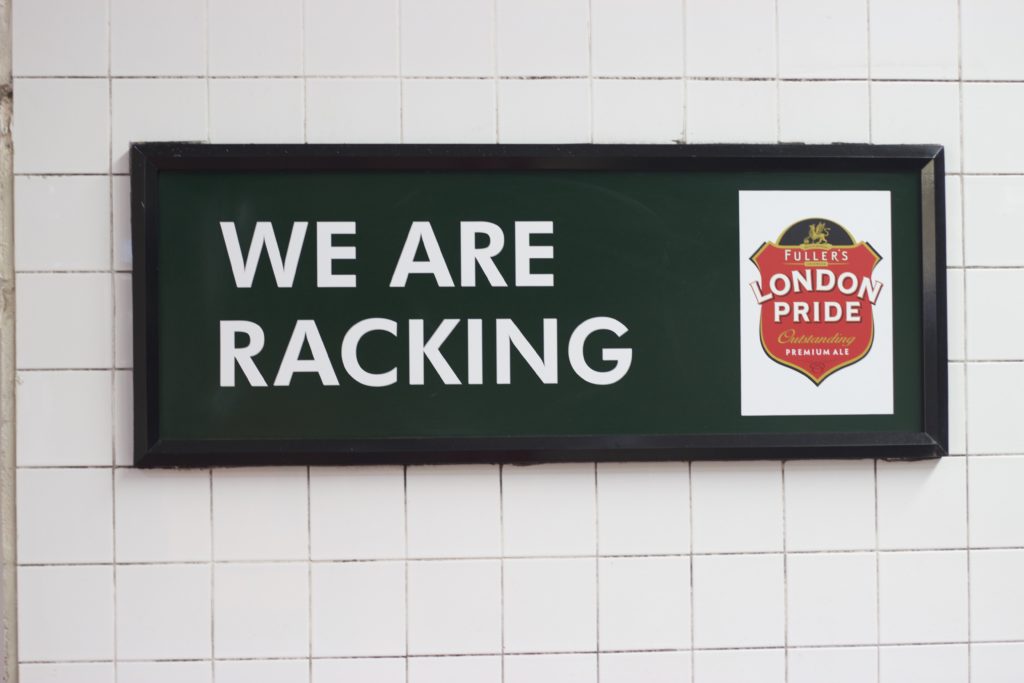
Firm Principles
It’s partly why Fuller’s will never brew under license. London Pride tasted different in 1978 to it does today. Whether it’s better or worse is a different question, but Keeling wryly adds that he doesn’t have a time machine to get the ingredients that were used then.
“We have principals of brewing that beer but we would never want to put it in a straight jacket, either,” he says.
It’s a reason, according to Keeling, that beers like Pride have a distinctive character, but without having a hoppy dominance.
“I would say it that if you name the ingredients, yeast is one of the hardest to get right. Modern brewers will find out, after a while, that there is a yeast that works best for them. And will find that they want to control that. They will find changes in the yeast they use, due to inconsistencies in the yeast and once they have enough money and science, they will look to control that,” he argues.
It’s this guidance, teaching and concern for newer breweries that has endeared Keeling to them across the globe. He points out that it’s very important to have good brewers, and that wages are going up, as it makes Fuller’s’ stance on flavour seem like a good decision to have made.
“And in the end, people are buying our beer. We don’t care if you belong to the craft world, or the traditional world. We learn from big companies, we learn from small companies, and then you look at the whole picture,” he explains.
“Reputation is important as you have value and standards, but communication is important too. We are an open brewery, and I don’t mind other breweries coming too. Breweries studying and learning, they come here and work to learn and progress. They are going to make the pool we fish in better and if we don’t help them, they could easily mess it up and make our pool smaller.
“I don’t want anybody that starts a brewery to produce rubbish beer and fail. I want them to produce good beer.”
Keeling adds: “We want people to know the lengths we go to produce good beer, and equally if another brewery discovers something we don’t know, then I’d like them to tell us too. I look at craft beer definition, and I do worry that it promotes some sort of elitism. We would be considered craft under the US definition and it’s crazy. I think it’s a matter of mindset, value, culture and philosophy.
“I don’t want those in the craft world, fighting their corner and not letting people in as it may ‘eat into a part of their pie’. We’ve had adversity in the past and people are afraid of Fuller’s coming into their town and wiping them out. We want to work with others, but if you are going to have a commercial battle of something, guess who is going to win?
“But, you have other breweries that we are massively friendly with and we sell their beers in our pubs. I tell to people coming here to look at breweries, get yourself sorted out and we’ll buy 100 firkins or so for our pubs.”
Key Philosophy
While Keeling’s consideration for other breweries is to be admired, his love and passion for the Fuller’s brand doesn’t stop when he leaves the Griffin Brewery, either.
He explains: “Philosophy is important and makes it easier to let new people know more about what we do and the first line of this is. We will always attempt to make good beer.
“Everything comes back to that as a root of what we want to do. In practical terms, when our sales department say they need more London Pride, but none is ready, then we have to say no, as then you’re not attempting to make great beer. That’s where credit has given us power, to say that we won’t compromise and you’l get it when it’s ready.
“So when I’m out, I try a variety of beers, but I will order by own beers, too. When I do see them, I need to order them as I have a QC check I need to do before anything else. It’s like you’re working for a family, we have people looking after the brand.”
And it’s that family approach Keeling, and his team have embraced that is likely to ensure that his beer will continue to be a success many years from now, too.
“You always have to move eventually, and when Reg Drury (the respected, now-departed former head brewer at Fuller’s) moved on after his 18 years as head brewer, he told me they had replaced every piece of equipment at the brewery and the first piece he commissioned was starting to wearing out and that he didn’t have the strength to start the cycle all over again, and maybe that will happen to me.
“But could I ever work for another brewery if I left here? I really don’t think so.”
1 comment on “Meet the Brewer: John Keeling, Fuller’s”
Comments are closed.


These ‘old’ systems rellay intrigue me. The ‘cleansing system’ being the oldest which was basically a single fermenter where the beer was cleared in the casks.The ‘dropping system’ is just a minor modification of the ‘skimming system.’ Both of these used two vessesl and then the cask. You could make much brighter beer this way.So to your question, Ron.What about the amount of yeast used per barrel? Same goes for the percentage of sugar?The AK states that it uses 57lb 1st crop. How does the X differ?I’d put dollars to doughnuts and bet it wasn’t anything like this. Im betting it was a function of two things. The ‘head’ and the temperature. 70F seems to be the magic number then. They wanted to wait until they got to the ‘yeasty’ head before they dropped the beers but temperature would regulate it most. These beers should have been cooler b/c it was March. In the summer Im betting they got them into the squares faster and jacked up the attemperators (sp?). When the beers started to look like they were almost complete the attemp were cranked to drop the beers down to 60 or low (winter). At this point they were very careful about skimming in that they wanted to ensure a small head was left on the beer to avoid aerial contamination. This is combined info from a bunch of 1880-1920 manuals. Lots of good stuff.